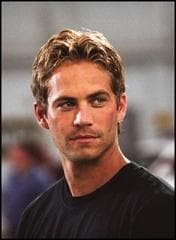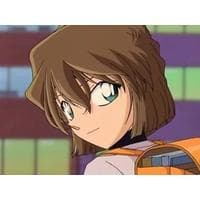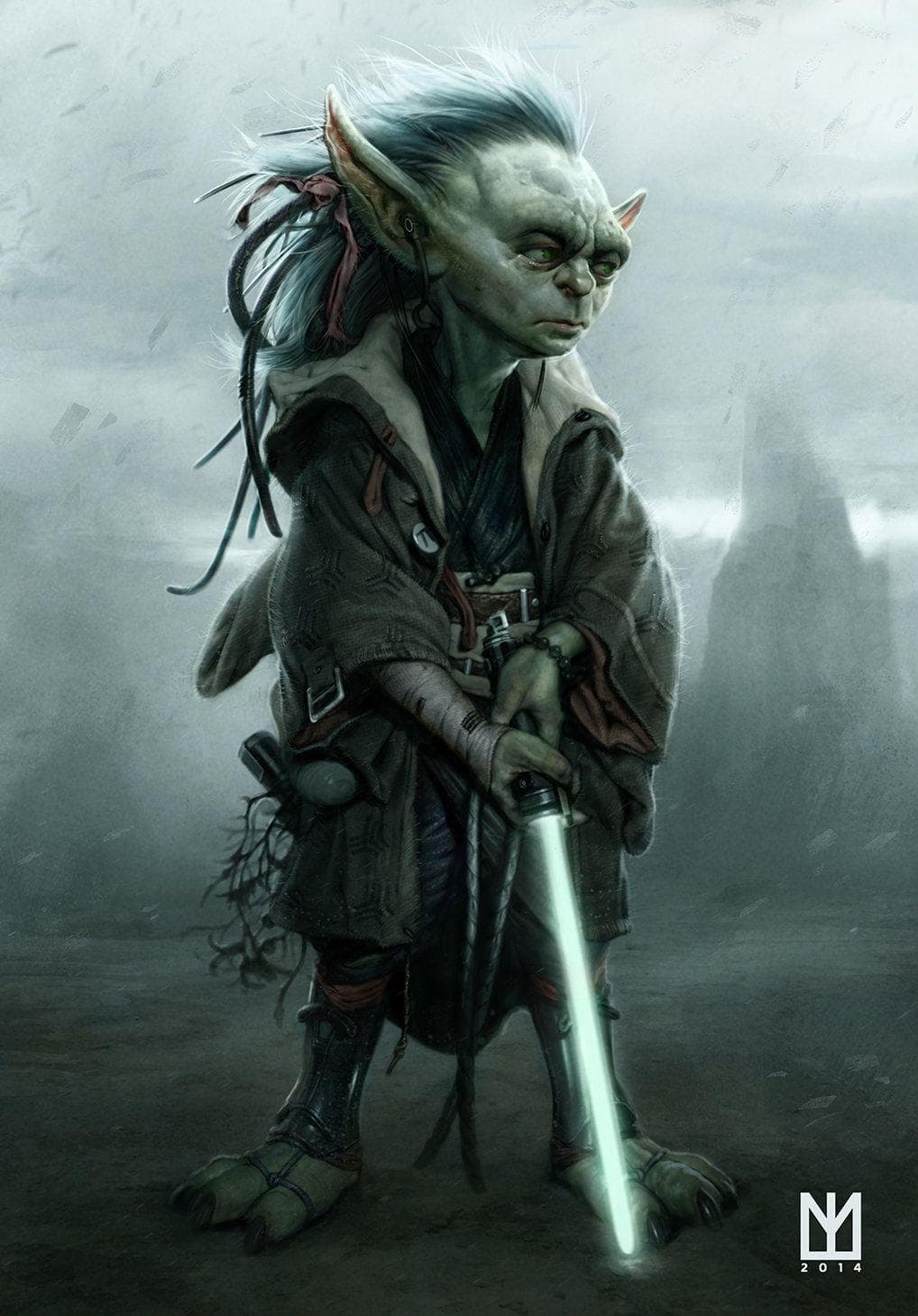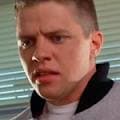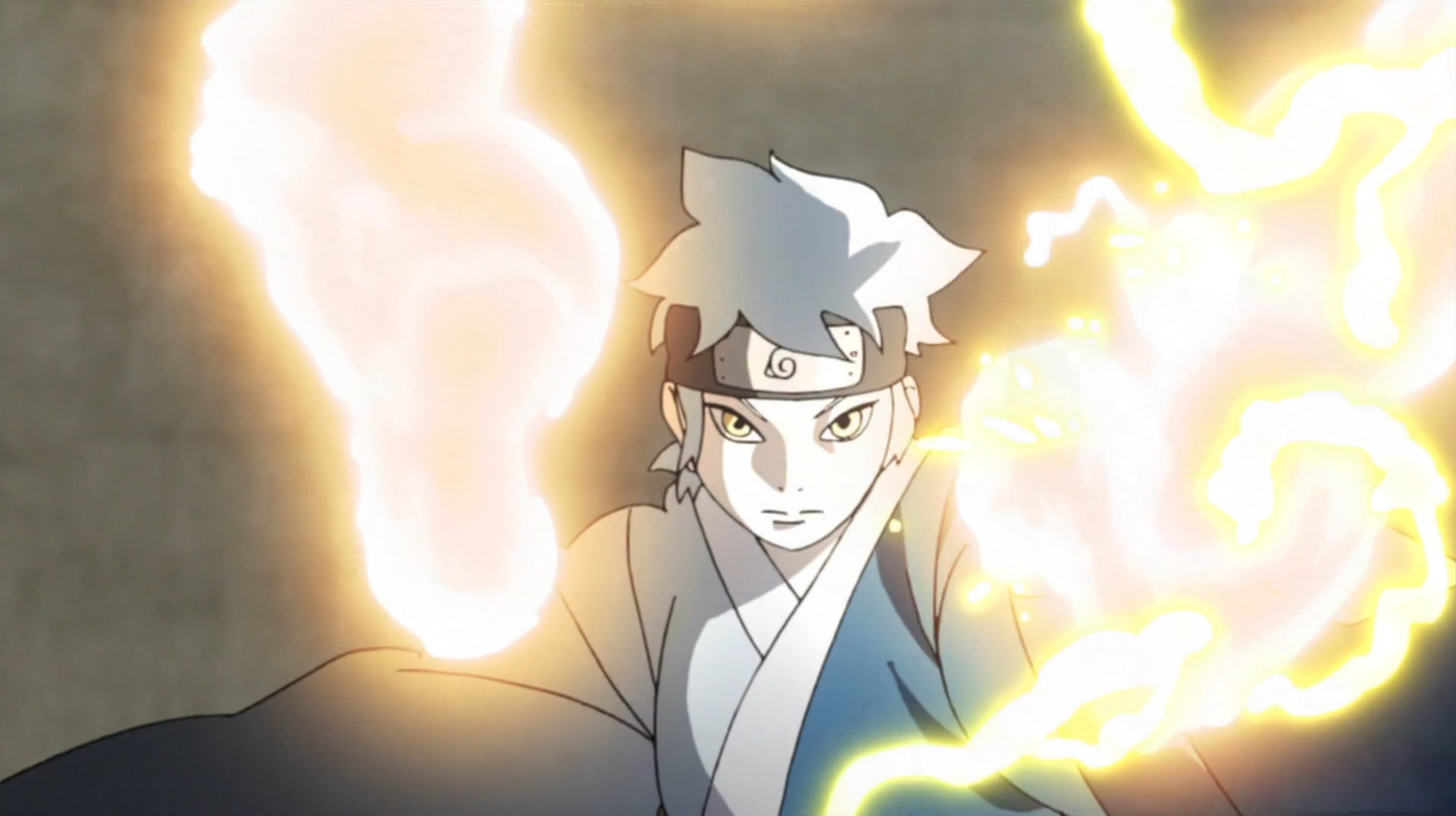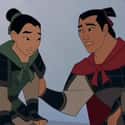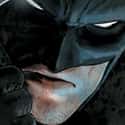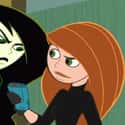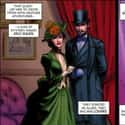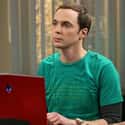-
(#1) Thor
- Thor: The Dark World, The Incredible Hulk Returns, Thor, Hulk Vs, Thor: Tales of Asgard, Ultimate Avengers 2, The Avengers, Next Avengers: Heroes of Tomorrow, Marvel Universe
Thor. The God of Thunder. The first son of Odin. A founding Avenger. Lesbian icon? The noticeable lack of any LGBTQ+ characters in over a decade's worth of Marvel Studios movies hasn't stopped fans in the community from looking for heroes to identify with. For lesbians, that unlikely hero is Thor.
"Thor is an honorary lesbian icon but none of us d***lings can explain why," @harperrusset tweeted. "All we know is that he is the One Safe Man that all lesbians dance around like maenads and that's just the way it is."
-
(#2) Ariel
- Disney's House of Mouse, The Little Mermaid, Mickey's Magical Christmas: Snowed in at the House of Mouse, The Little Mermaid II: Return to the Sea, Disney Princess Party: Volume Two, Mickey's Fun Songs: Beach Party at Walt Disney World, The Little Mermaid: Ariel's Beginning, Mickey's PhilharMagic, The Little Mermaid, The Little Mermaid, Disney Princess
The Little Mermaid has its fair share of certified LGBTQ+ icons, from Ursula, who was inspired by drag superstar Divine, to Sebastian, the young mermaid's "gay best friend." But the titular, feisty heroine holds special significance to a particularly marginalized group.
Writing for Marie Claire, Lindsey Romain says Ariel's story is the perfect analogy for the trans experience: "Ariel feels trapped in a body that's foreign to her... She surrounds herself with friends who are also considered outcasts. She's repressed by the expectations placed on her, and oppressed when she lashes out against them."
"Ariel was always my favorite Disney princess. I always strongly identified with her, probably because we're both trans women," transgender comic Shon Faye concurs. "I mean, I'm just transgender, whereas I guess Ariel is trans-species, but you know, getting here wasn't an easy ride for either of us!"
-
(#3) Captain America
- The Avengers: Earth's Mightiest Heroes, Ultimate Avengers, Captain America, Ultimate Avengers 2, Captain America: The Winter Soldier, Captain America, Captain America: The First Avenger, The Avengers, Captain America II: Death Too Soon, Captain America, 3 Dev Adam, Marvel Universe
In Captain America: The First Avenger, Steve Rogers only has eyes for Peggy Carter. But plenty of viewers picked up on some sexual tension between Steve and his brainwashed, ex-war buddy Bucky Barnes in 2014's Captain America: The Winter Soldier. The #GiveCaptainAmericaABoyfriend campaign began trending on Twitter, and fans have been in love with the idea of a bisexual Captain America ever since.
Writing for BuzzFeed, Kelsey1205 argues that Steve's clear interest in both men and women, his non-confirmation of his heterosexuality, and his roots in a famously LGBTQ+ neighborhood in New York have made him an important figure for bisexual people.
-
(#4) Rita Repulsa
- Mighty Morphin Power Rangers, Turbo: A Power Rangers Movie
Long before the 2017 Power Rangers film featured a queer Yellow Ranger, the multi-colored franchise of the 1990s had a big following in the LGBTQ+ community. "I truly believe that for myself and many others, Rita Repulsa was our first gay icon before we really knew what that was," YouTuber Rantasmo says. "She's an outspoken woman working in a patriarchal industry... she makes extremely strong fashion choices."
Rantasmo goes on to point out that queer adults take huge pleasure in the camp qualities at which the show as a whole excels, as well as the downplaying of physical heterosexual romances, which leaves room for viewers to queer-code characters.
-
(#5) Li Shang
- Mulan II, Reflections on Ice: Michelle Kwan Skates to the Music of Disney's 'Mulan', Mulan
From Mickey Mouse to Ursula, Disney's canon has been subtly rainbow-shaded for decades, despite lacking enough actual LGBTQ+ characters. One of the more openly LGBTQ+ characters queer Disney fans have discovered is Mulan's Li Shang, the burly Captain who — according to @cece on Twitter — gives Mulan "the exact same look even when he thought she was a man."
The importance of "bisexual icon" Li Shang was especially felt when it was revealed that Disney had decided to cut the character from its live-action remake, sparking an online backlash with calls to boycott the film.
-
(#6) Storm
- X-Men: Days of Future Past, X-Men, X2, X-Men: The Last Stand, X-Men Origins: Wolverine, Superhero Movie, Marvel Universe, Earth-11052
The X-Men, a group of mutant superheroes who "protect a world that fears and hates them," were intentionally created as a metaphor for the fight for civil rights. "The main objective was to show that bigotry is a terrible thing," said co-creator Stan Lee. Openly queer characters like Northstar, Iceman, and Mystique have led the way for Marvel to become more inclusive over the years.
Before then, Storm — a character with strong bisexual subtext — was often the one that LGBTQ+ readers gravitated towards. Andrew Wheeler writes for Comics Alliance:
Storm's transformation from elemental goddess to mohawk leather punk is one of the queerest stories ever told in comics, because it's a story about liberating oneself from other people's expectations and finding a greater strength through letting go (30 years before Elsa).
-
(#7) Batman
- Batman Beyond, Young Justice, Batman, Batman: The Animated Series, Justice League Unlimited, Batman: The Brave and the Bold, The New Batman Adventures, Is Your Honeymoon Really Necessary?, Batman Beyond: The Movie, Batman Beyond: Return of the Joker, Batman: Under the Red Hood, Batman, The Dark Knight Rises, Batman Begins, Batman: Year One, Batman Fights Dracula, Batman: New Times, The Batman vs. Dracula, American Splendor, Robin's Big Date, Batman: The Dark Knight Returns, Part 2, Alyas Batman en Robin, Batman: Mask of the Phantasm, The Lego Movie, The Dark Knight, The Fatima Buen Story, Alyas Batman at Robin, Superman/Batman: Public Enemies, Justice League: Crisis on Two Earths, Justice League: Doom, Batman: Gotham Knight, Fight Batman Fight!, Movie 43, Batman Returns, Batman vs. Superman, Batman Forever, Batman, Batman & Robin, Disaster Movie, James Batman, DC Universe
If anyone from the Batman franchise is not exactly straight, everyone assumes it's Robin. According to writer Glen Weldon, who wrote an essay "unpacking the gay subtext of Robin, the Boy Wonder," for Slate magazine:
You’ve heard the gags, we all have. Slurs, cheap puns, and innuendo have dogged [Batman and Robin’s] partnership from the moment it began in 1940... factory-installed with unintended meta-meanings that read to us today like coyly coded messages.
But according to a comic writer in an interview with Playboy, the concept of Batman is "utterly gay," not Robin the Boy Wonder. According to Grant Morrison:
Gayness is built into Batman. I'm not using gay in the pejorative sense, but Batman is very, very gay. There's just no denying it. Obviously as a fictional character he's intended to be heterosexual, but the basis of the whole concept is utterly gay. I think that's why people like it. All these women fancy him and they all wear fetish clothes and jump around rooftops to get to him. He doesn't care — he's more interested in hanging out with the old guy and the kid.
-
(#8) Shego
- Kim Possible
If you grew up in the early '00s, your Saturday morning cartoon schedule likely included watching Kim Possible's heated battles against her evil green lookalike Shego. As it turns out, the henchwoman's strength, sensuality, and sassiness resonated with a lot of young queer girls.
"Throughout the show, the sexual tension between the teenage crime fighter and her main nemesis is palpable," Vice's Kari Paul says. "Also, Shego got her powers after being hit by a RAINBOW COMET. Need I say more?"
-
(#9) He-Man
- The New Adventures of He-Man, He-Man and the Masters of the Universe, The Secret of the Sword, Masters of the Universe, Masters of the Universe
What's gay about He-Man And The Masters Of The Universe? According to He-Man devotee David Chlopecki, the question is really: what isn't gay about He-Man And The Masters Of The Universe?
"As the intro to the show, they say, 'Fabulous secret powers were revealed to him the day he held aloft his magic sword,'" Chopleki points out:
Prince Adam is a very gay guy. He is wearing spandex, lavender spandex, and pink spandex, and white spandex... he goes from a guy wearing spandex with a pageboy haircut, he holds aloft his magic sword, and, poof! His clothes are gone. And he's wearing a harness. Now, the only time my clothes have been gone and I'm wearing a harness is when I'm having sex with men.
He-Man's snarky enemy Skeletor has plenty of followers, too. In 2011, an art show featuring homoerotic tributes to the character were auctioned off for charity. Appropriately, the show was sponsored by fetish gear site Slick It Up.
-
(#10) Prince Vultan
- Flash Gordon, Flash Gordon
Flash Gordon has plenty of camp value, but one of the more overlooked aspects of the cult classic, at least in terms of LGBTQ+ appeal, is the rugged masculinity of a certain winged warrior. Gay Star News' David Hudson explains:
I was not even a teenager when I first saw British actor Brian Blessed playing Prince Vultan in the 1980 sci-fi spectacular, Flash Gordon, but I felt inexplicably drawn to him.
I was too young to realize that he was the prototype "bear" before bear sub-culture had even become a thing, or that I myself would be drawn to bears in later life. Plus, I didn’t even know I was gay. It wasn’t just the hulking presence of the man – it was his booming fearlessness that appealed to the inner wallflower in me.
-
(#11) Mystique
- Epic Movie, X-Men: First Class, X-Men: The Last Stand, X2, X-Men: Days of Future Past, X-Men, Marvel Universe, Earth-11052
Though you wouldn't know it from any of the X-Men movies in which she's appeared, Mystique has been bisexual since the early '80s in the Marvel comics. The shapeshifting mutant has bedded her fair share of men, but her longest relationship is with another female mutant named Destiny, a fact that writer Chris Claremont was editorially forced to skirt around at the time.
Together, the pair are an even rarer thing in superhero comics: same-sex parents, adopting the teenage runaway Rogue. Mystique's fluctuating form also makes her important to those who identify as gender fluid, non-binary or trans.
"Mystique was born female and possesses a female gender identity, but neither defines her," J. Skyler says on ComicBookBin. "She is as comfortable adopting a masculine persona and living as a man as she is in her natural form — an atypical mindset in a world where sex and gender so rigidly define all cultures and our perception of one another."
-
(#12) Sheldon Cooper
- The Big Bang Theory
Asexuality is one of the most underrepresented identities in pop culture, and one of the most misunderstood in real life. Asexual characters' sexuality is often mislabeled, or harmfully characterizes them as misfits, villains, or devoid of emotion. One of the most well-known asexual icons is The Big Bang Theory's Sheldon Cooper, who some in the asexual community view as a problematic favorite.
"As an asexual person myself, I believe that Sheldon Cooper checks all the major boxes of asexuality, though the writers of the show insist he is not," Chloé Osmond writes at The Mary Sue. Even after Sheldon agrees to a more sexually intimate relationship with his girlfriend Amy, asexual audiences still connect with him, as one BuzzFeed contributor explains:
After his girlfriend — who didn't always seem to respect his feelings on sex — continuously pushed for him to be intimate with her, several serious conversations arose about romantic attraction and how he saw sex as something he would do mainly for her, not himself, which is similar to how I (and other asexual friends of mine) view sex with a romantic partner.
-
(#13) Lara Croft
- Revisioned: Tomb Raider Animated Series, Lara Croft Tomb Raider: The Cradle of Life, Lara Croft: Tomb Raider
Lara Croft is one of gaming's few female icons. Back in 1996, the rare chance to play as a woman was exciting for both straight male and female gamers. For LGBTQ+ players, it was especially significant.
"Even back in the days when straight men wasted hours hunting for the nude cheat code that never was, the impact of Tomb Raider was still inextricably linked with the queer community at large," writes David Opie for Into:
Lara has always been a strong role model for queer men and women alike, but the 2013 reboot added another layer to this, transforming our hero into a outsider forced to overcome seemingly impossible odds. This survivor narrative draws explicit parallels with the often harsh process of coming out that enabled LGBT[Q+] fans to empathize with Lara like never before.
-
(#14) Xena
- Xena: Warrior Princess, Hercules & Xena: Wizards of the Screen, Hercules and Xena - The Animated Movie: The Battle for Mount Olympus, Hercules: The Legendary Journeys, Xenaverse
Some characters in pop culture only seem to appeal to specific groups in the LGBTQ+ community. Xena the warrior princess is not one of them: everyone loves her. She's a shrieking, feminist heroine that queer men want to be and queer women want to be with.
Producer Liz Friedman said in 1996, during the height of the show's popularity, that the lesbian subtext queer fans enjoyed between Xena and her adventuring companion, Gabrielle, was all intentional: "That’s one of the best parts of the job, getting to throw in references that I know the fans who are interested in that will pick up on, but don’t necessarily flash any irrevocable red lights."
-

(#15) The Babadook
In 2016, Tumblr jokes circulated relating the Australian horror movie monster the Babadook to LGBTQ+ pride. But the joke didn't originate unfounded; the sexual subtext was derived from the film's storyline, in which a woman and her son only half-acknowledge the existence of the Babadook, "even as he has undeniable and chaotic impact on their family unit," writes Elle Hunt in The Guardian. She continues:
As Karen Tongson, an associate professor of gender studies and English at the University of Southern California, told the LA Times: “Someone was like, ‘How could The Babadook become a gay film’ and the answer was readily available... For many LGBT[Q+] people, that’s what it feels like to be in your own families sometimes."
The LGBTQ+ community embraced the Babadook, and turned the monster into a beloved symbol of queerness, individuality, and self-ownership. Many Pride parades since 2016 have seen the character's likeness showcased in the streets below rainbow-colored banners.
-
(#16) Bert And Ernie
While not everyone is fully convinced that Bert and Ernie's gay subtext is proof of a true homoerotic relationship, a tweet from Bert himself in June 2010 seemed to add a whole new layer of confirmation:
Ever notice how similar my hair is to Mr. T's? The only difference is mine is a little more "mo," a little less "hawk."
According to The Telegraph, "The remark meant nothing to most readers, but sparked intrigue in certain gay circles, where 'mo' is shorthand for 'homosexual.'"
Over the years, however, keen observers have pointed out that Bert and Ernie's shared room, intimate book covers, and overall close relationship is more than platonic. As such, the two have become gay icons.
New Random Displays Display All By Ranking
About This Tool
We can clearly know that more LGBTQ+ icons appear on the big screen than ever before. Over the past few decades, the representation of the LGBTQ community in movies and TV shows has greatly increased. This has an important influence and a huge contribution to the LGBTQ+ equal rights movements. Looking back on history, there has never been a shortage of the most iconic LGBTQ characters.
The random tool introduced 16 characters that are LGBTQ+ icons in pop culture, including Thor, Ariel, Li Shang IN Mulan, and more famous characters that you never realize. Welcome to share this interesting tool with other friends and search for what you want here.
Our data comes from Ranker, If you want to participate in the ranking of items displayed on this page, please click here.



